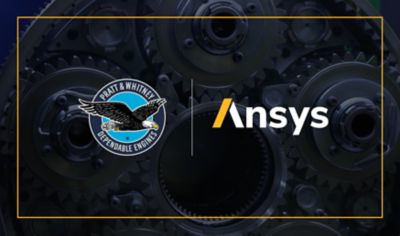“The beauty of Ansys simulation is that the accuracy of the simulations when combined with Pratt & Whitney's engineering design experience, enable a more optimized and better Geared Turbofan [GTF] aircraft engine. This hydrogen propulsion concept operates on an advanced thermodynamic cycle, and Ansys’ simulation software allows us to identify the technical challenges associated with an advanced concept in a quantified manner. This informs the future technology development strategy that will allow us to tackle those challenges and field a hydrogen propulsion concept and engine in the future.”
-
United States -
United Kingdom -
India -
France -
Deutschland -
Italia -
日本 -
대한민국 -
中国 -
台灣
-
Ansys stellt Studierenden auf dem Weg zum Erfolg die Simulationssoftware kostenlos zur Verfügung.
-
Ansys stellt Studierenden auf dem Weg zum Erfolg die Simulationssoftware kostenlos zur Verfügung.
-
Ansys stellt Studierenden auf dem Weg zum Erfolg die Simulationssoftware kostenlos zur Verfügung.
-
Kontakt -
Karriere -
Studierende und Akademiker*innen -
Für die Vereinigten Staaten und Kanada
+1 844,462 6797
The Future of Sustainable Aviation with Pratt & Whitney
Paving the Way for Net Zero Emissions
Hydrogen-Powered Aircraft
Pratt & Whitney has a vision of enabling the air transportation sector to achieve net zero carbon emissions by 2050. To meet that goal, the company has developed a sustainability strategy that includes technologies that enable its customers to reduce their emissions. All engines are certified to operate on 50% sustainable aviation fuels (SAFs) and much of Pratt & Whitney’s current testing involves exploring SAFs on blends that approach 100%.
Pratt & Whitney has pioneered a game-changing aircraft engine architecture called the Geared Turbofan (GTF), which pulls down fuel energy consumption by roughly 16% and reduces regulated NOx emissions by 50%. This innovative design offers significant fuel savings and efficiency, and since service began in 2016, has saved aircraft operators over a million gallons in fuel.
The Future of Sustainable Aviation
Pratt & Whitney has a vision of enabling the air transportation sector to achieve net zero carbon emissions by 2050. Discover the importance of simulation in guiding the engineering design and validation process towards meeting this ambitious goal.
The Digital Thread
The physics involved in aviation is incredibly complex. The combustion alone is like hurricane-strength winds mixing with fuel temperatures above the melting point of the metal that surrounds them. And all of that must be choreographed in a way that develops a product people can count on to fly safely every day.
During its long history of working with Ansys, Pratt & Whitney has developed customized tools to address these and other design issues. The company has built a map of all its data sources, models, and capabilities into a digital thread that runs throughout the entire lifecycle of the product. The result is that Pratt & Whitney has been able to reduce the amount of testing, the amount of rework, and the amount of effort it takes to arrive at final designs.
The Digital Thread
By building a map of all its data sources, models, and capabilities into a digital thread that runs throughout the entire product lifecycle, Pratt & Whitney has been able to reduce the amount of testing, the amount of rework, and the amount of effort it takes to arrive at final designs.
“Imagine a world where new products take shape digitally in simulation before we build any models to test. Where hundreds or thousands of possible designs are explored in automated workflows. That may sound like science fiction, but it's something that Pratt & Whitney is doing today. Ansys products allow us to understand very complex aspects of our jet engines before we bend a single piece of metal.”
Pete Bradley
Principal Fellow – Digital Tools and Data Science, Pratt & Whitney
Learn More
Los geht's
Wenn Sie mit technischen Herausforderungen konfrontiert sind, ist unser Team für Sie da. Mit unserer langjährigen Erfahrung und unserem Engagement für Innovation laden wir Sie ein, sich an uns zu wenden. Lassen Sie uns zusammenarbeiten, um Ihre technischen Hindernisse in Chancen für Wachstum und Erfolg zu verwandeln. Kontaktieren Sie uns noch heute, um das Gespräch zu beginnen.















